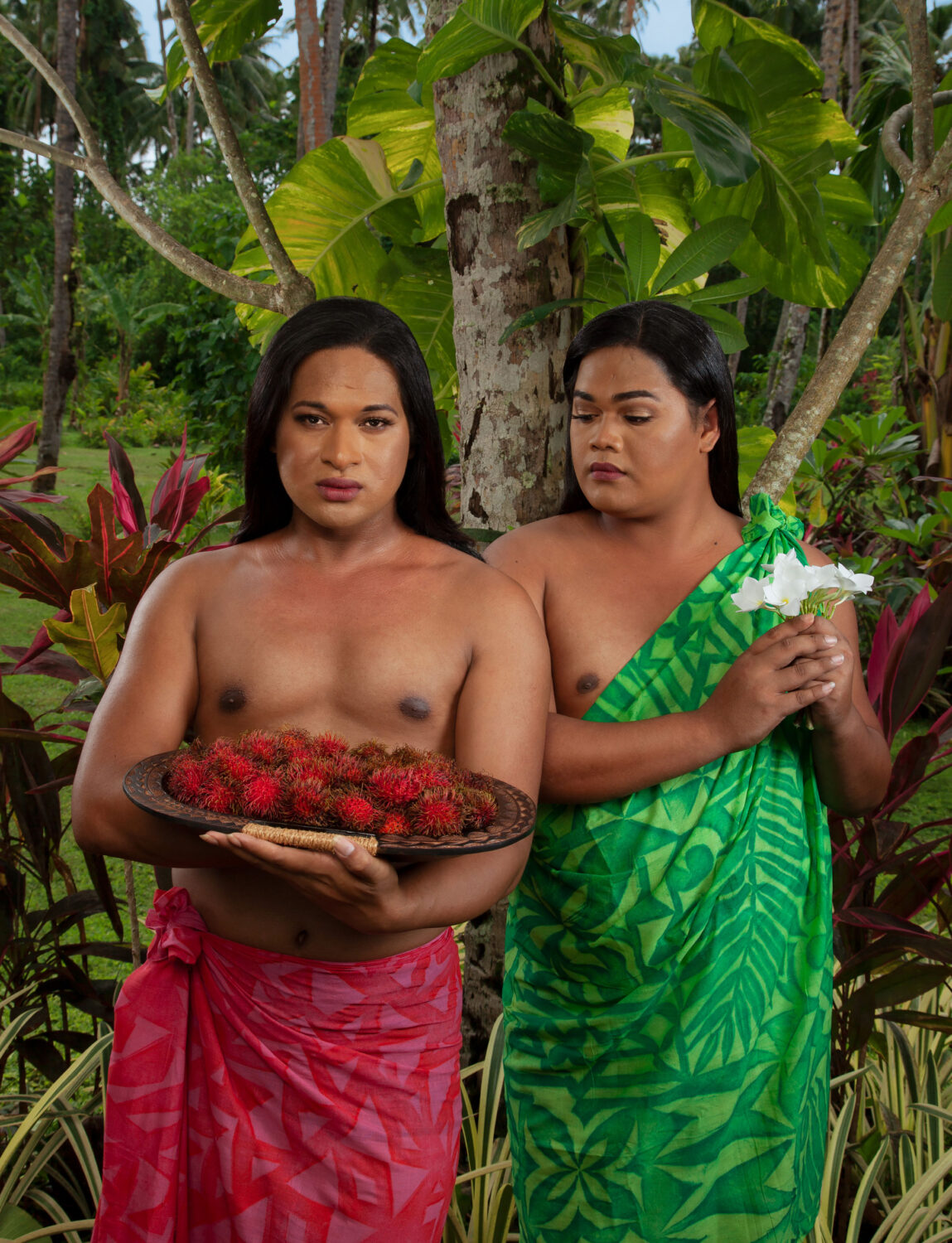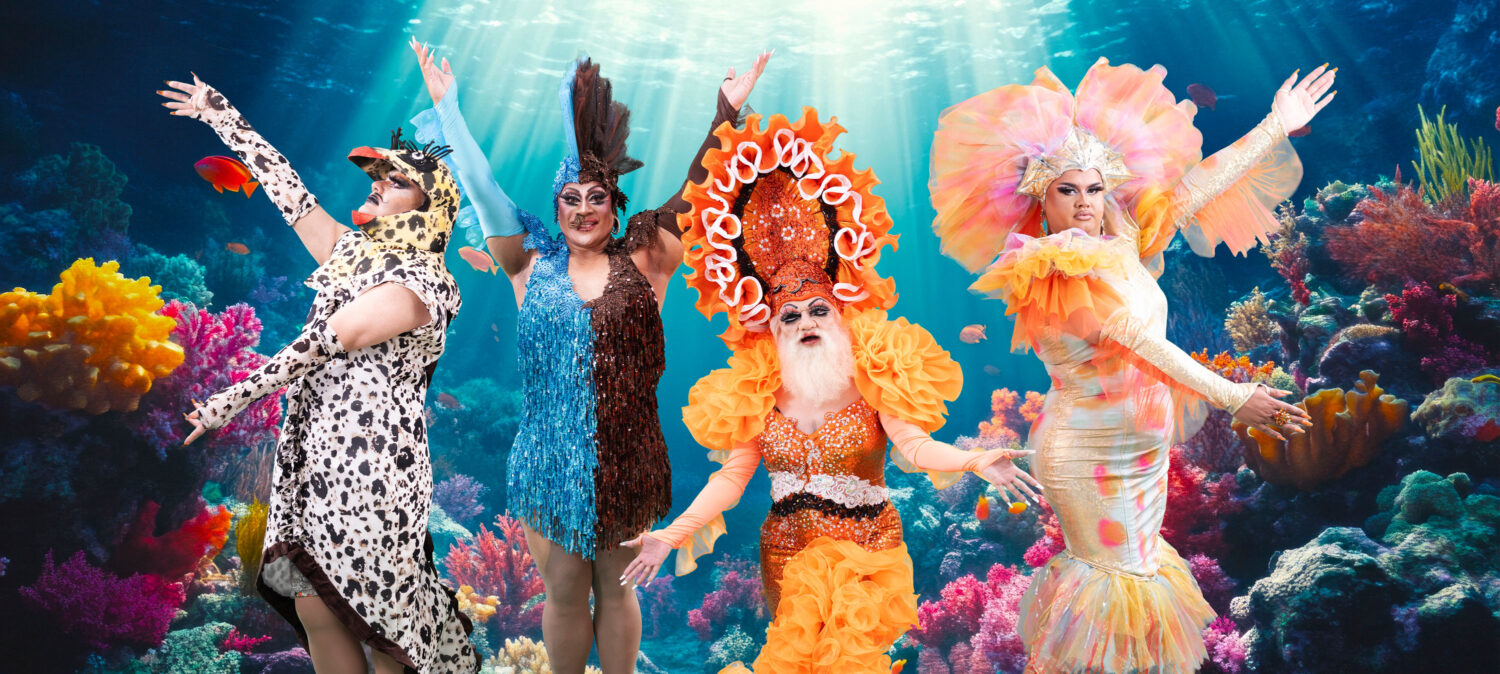Decolonising Darwin: Sāmoan-Japanese Artist Yuki Kihara on Queerness in Nature
By Keshav Anand“Growing up in Catholic schools often limited my exposure to broader historical perspectives, particularly the Indigenous Pacific worldview that is frequently overlooked. My personal journey towards decolonisation continues as I explore various archives that challenge my understanding of the world around us,” Yuki Kihara tells Something Curated’s Keshav Anand, discussing her new show, Darwin in Paradise Camp, at the Sainsbury Centre in Norwich.
Over the past decade, the Sāmoan-Japanese artist has built a cross-disciplinary practice that straddles performance, sculpture, video, photography, and curation. The new exhibition, now open and on view until 3 August 2025, presents the UK premiere of Paradise Camp (2022), Kihara’s critically acclaimed photographic series first exhibited at the 59th Venice Biennale, alongside original works by Paul Gauguin, and a newly commissioned video piece, Darwin Drag (2025).

Kihara’s work often sheds light on overlooked histories, unearthing narratives that challenge dominant perspectives – such as the erasure of queerness in nature, particularly in the way Charles Darwin’s findings have been framed. “You would hear bits of information about queer species through nature documentaries, but it never expands on it, due to their efforts to maintain societal norms that privilege heteronormativity rather than understanding that we all have a part to play in the wider ecosystem,” the artist observes.
This idea takes centre stage in Darwin Drag. In the video work, Kihara takes on the persona of Darwin himself, stepping into the scientist’s shoes to imagine a confession long kept hidden. “I prosthetically transform myself as Charles Darwin, who confides in a renowned Sāmoan drag queen, BUCKWHEAT, that he has been unhappy keeping his secret in the closet about queer species for so long,” she explains.

Having first come across Kihara’s work through the exhibition Paul Gauguin – Why Are You Angry? at Berlin’s Alte Nationalgalerie back in 2022, I quickly grasped just how adept she is at delivering complex messages through satire. A pastiche of mid-morning TV, the work shown in Berlin, First Impressions, was part of a series that captures candid responses from a panel of Sāmoa’s fa’afafine community to Gauguin’s paintings. The panellists view the works through the lens of their own lived experiences in Sāmoa, speaking about gender inequality, Christian shame, nakedness, and hormone replacement therapy—packaged almost like an episode of RuPaul’s Drag Race: Untucked.
Returning to the current show, Darwin in Paradise Camp continues to build on this line of enquiry. Seeing Gauguin’s work in New York was a catalyst for Kihara’s Paradise Camp, and now her series is being presented alongside original paintings by the French artist. “I do feel that I’m reclaiming the narratives behind his work, some of which were inspired by photographs from Sāmoa, which were crucial for the development of his major paintings presented as somewhere else other than Sāmoa.” By reinterpreting his compositions with fa’afafine and fa’afatama models, Kihara subverts the colonial gaze that has long defined Western representations of the Pacific.
Despite shifts in the art world, Kihara remains sceptical about whether mainstream perceptions of the Pacific have meaningfully evolved. “The old colonial tactics of divide and conquer just updated themselves with technology that enforces gender binary divisions,” she says. Through Darwin in Paradise Camp, Kihara challenges these imposed binaries, advocating instead for a recognition of the fluidity that has always existed within Pacific cultures.

The exhibition is part of Can the Seas Survive Us?, a wider programme at the Sainsbury Centre examining humanity’s relationship with the ocean. For Kihara, the link between environmental and cultural survival is inexorable. “In Sāmoa, we have an ancient proverb, “A logo tai ua logo uta (when it is felt toward the sea, it is felt toward the land),” which means “how we treat the ocean impacts the way we live on the land.”” The consequences of climate change are deeply personal for Kihara and her community. “Climate change intensifies cyclones, with stronger winds and more rainfall. Cyclones are fuelled by the warm, moist air provided by rising ocean temperatures. Cyclones damage the land and the sea, including breaking corals that many fish species depend on for their survival.”
Against this backdrop, the exhibition raises an urgent question: with the prevalence of heteronormativity in popular nature documentaries, who speaks for the queer species including those in the ocean? Darwin in Paradise Camp aims to explore the answer. By interweaving themes of colonial history, gender diversity, and climate justice, Kihara presents a radical rethinking of our relationship with both the past and the natural world.
Following its presentation in Norwich, Darwin in Paradise Camp will travel to the Whitworth, The University of Manchester, from 3 October 2025 to 1 March 2026.
Yuki Kihara’s reading recommendation: English is Broken Here by Coco Fusco.
Feature image: Yuki Kihara, Fonofono o le Nuanua: Patches of the Rainbow (after Gauguin), 2020. Courtesy of Yuki Kihara and Milford Galleries, Aotearoa New Zealand